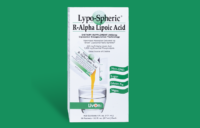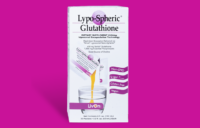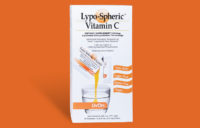Vitamin C
Vitamin C For Skin: What It Actually Does
With all these serums on the market and the articles in beauty magazines, the message is clear: Vitamin C is critical to your skin. But how? The function of vitamin C for skin care — and how to properly supplement — is as complicated as this outer, protective organ itself.
Our skin is our bodies’ protection from the constant onslaught of the outside world. It’s our first line of defense. That’s why it so clearly shows our age. It’s the organ that collects the brunt of the damage to protect our internal organs. That being said, we need it to be as healthy as possible to continue to protect us. What good is a wall to protect us from a hail of bullets if it is riddled with bullet holes?
Vitamin C for skin care has gotten a lot of attention due to the relatively high concentration of Vitamin C in the skin and the direct effects that a Vitamin C deficiency has on your skin. Wounds that don’t heal and subcutaneous bleeding are known results of Vitamin C deficiency and scientists theorize that lesser versions of these symptoms are present in people who have sub-optimal levels of Vitamin C.
Functions of Vitamin C for Skin
Vitamin C is a co-factor in collagen formation, meaning that it is a necessary component to a critical step (hydroxylation) in producing collagen in the dermis. While collagen provides skin strength and elasticity at the inner level, its counterpart keratinocytes perform an equally crucial function in the outer layer. Comprising 95% of the cells in the epidermis, keratinocytes form most of the barrier between us and the environment. A study in rats showed that Vitamin C enhanced the differentiation of keratinocytes, which enables them to produce compounds critical to the outermost layer of the skin.
As an antioxidant, Vitamin C plays a critical role in neutralizing the free radicals that threaten the outer epidermis layer of our skin. We encounter these every day from environmental contaminants and ultraviolet radiation (a.k.a., sunlight). Free radicals wreak havoc on our skin (and other organs) by taking electrons from our cells. Antioxidants like Vitamin C have an extra electron, which they can donate to the free radical to neutralize it. Vitamin C is particularly effective in neutralizing free radicals in the skin when used with Vitamin E.
Researchers have conducted numerous studies that indicate the protective role of Vitamin C for skin damage.
Sun damage: Sunburn kills skin cells. Chronic UV overexposure leads to photoaging, which damages collagen and thins the outer layer of our skin. Higher levels of Vitamin C and E can improve resistance to the negative effects of sunlight.
Discoloration: Both hyperpigmentation and loss of color can occur from chronic exposure to UV radiation. Illness and aging can contribute to the thinning of skin layers and decreased melanin that cause loss of skin color while environmental stress plays a role in the excess of melanocytes (melanin-forming cells) that cause too much pigment. Nutritional studies have shows that both conditions improved with increased fruit and vegetable intake.
Aging: Skin sagging and wrinkling are natural parts of aging, but can be accelerated by factors like smoking and oxidative stress. The loss of collagen as we age is a primary cause. Scientists have shown that supplementing with Vitamin C can lessen wrinkle depth and increase collagen formation. Other studies showed a correlation between skin tightness and fruit and vegetable intake.
Texture: Skin roughness and dryness mean the skin is losing its moisture barrier function. Roughness is often due to exposure to UV radiation and chemicals while weather factors like extreme temperatures, low humidity, and wind can cause dry skin. Numerous studies have found that Vitamin C is a requirement to produce barrier lipids.
Healing: Excessive scar formation and thickening, rough skin is indicative of poor wound healing that is a direct effect of Vitamin C deficiency. Researchers have found that Vitamin C can lessen the appearance of scars.
How to Take Vitamin C for Skin
The skin has two upper layers, the dermis and the epidermis. The latter is the outermost layer and, as it lacks the blood vessels that usually deliver nutrients to cells, it is difficult for nutrients to reach the epidermis. Hence the proliferation of topical Vitamin C for skin care. The problem here is the low likelihood that these serums penetrate the dermis level of the skin, which is where collagen is concentrated.
Multiple studies have found elevated levels of Vitamin C in the skin following supplementation. While there has been no research conducted specifically on the relationship between Vitamin C levels in plasma (the customary measurement to show the potential for Vitamin C saturation in tissues), some researchers have concluded that it is likely that levels of Vitamin C in the skin correspond to plasma levels. There is also evidence that once plasma levels have reached saturation, no more Vitamin C can be delivered to the skin. Researchers specifically call out topical applications as potentially unnecessary if you have saturation-level Vitamin C plasma content via diet or oral supplementation, though topical Vitamin C for skin poses minimal risk even at saturation.
With the numerous beauty creams and serums lining the skincare aisles, there is a bit of a misconception that Vitamin C must be applied topically for skin support. The reality is the aforementioned actions occur at a cellular level, meaning you can reap the skincare benefits by taking Vitamin C orally — through diet and supplements. You can get beauty from the inside out. So, before filling your medicine cabinet, try stocking your fridge with citrus, leafy green veggies, bell peppers, berries and some top-notch Vitamin C supplements.
These statements have not been evaluated by the Food and Drug Administration. This product is not intended to diagnose, treat, cure or prevent any disease.









